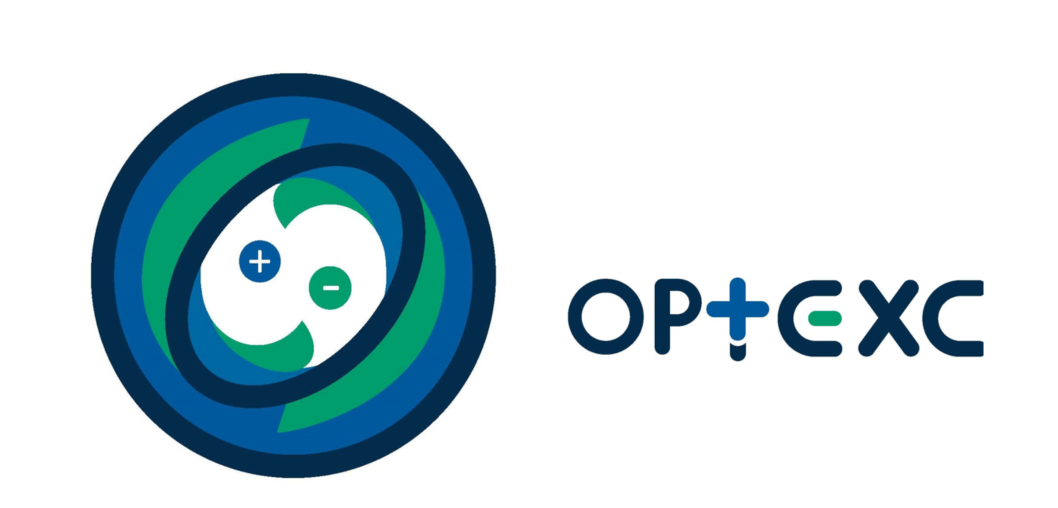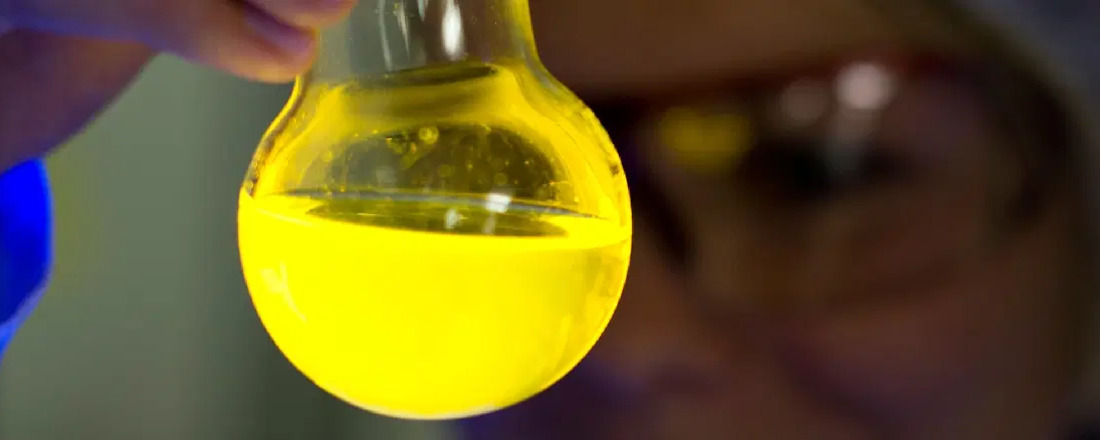PhD Projects
10 PhD Positions in optoelectronic semiconductors
Semiconductor materials are the cornerstone of modern electronic and photonic technology, and central to sustainable economic growth. So far, the functions of semiconductors are mainly defined by chemical and physical properties of their components, and organic and inorganic semiconductors are treated as separate research areas. We want to overcome the divide in material systems and tailor unprecedented optoelectronic properties by the
International German-Australian Research Training Group:
Optical excitations in organic and inorganic semiconductors (OPTEXC) -
Understanding and control through external stimuli
The University of Bayreuth (Germany), the University of Melbourne (Australia) and Monash University (Australia) together have constituted an interdisciplinary International Research Training Group in the areas of experimental and theoretical physics, synthetic, physical and computational chemistry, electrical engineering, material sciences and related areas.
We are looking for highly talented, passionate graduate students (m/f/d) with excellent track records interested in pushing forward our understanding of nature and its application in technology. The project builds on our established, supportive scientific network and includes research stays at a German and an Australian partner, leading to Joint PhDs with degrees from two universities.
Information on how to apply can be found here.
Application deadline 7 January 2025.
The positions are fully funded for minimum of three years:
TV-L E13 75% (Joint PhD with 2 years Bayreuth, 1 year Melbourne) or
equivalent PhD stipend (2 years Melbourne, 1 year Bayreuth)
Project Area 1: Controlling decoherence in the singlet fission process.
We aim at controlling decoherence in the singlet fission process through molecular design and the influence of external control over the evolving film morphology. In contrast to the commonly used crystalline materials, we use an “amorphous” intramolecular triplet host. In these compounds, the dephasing can be controlled by manipulating the local energy landscape molecular reorganisation in the excited state.
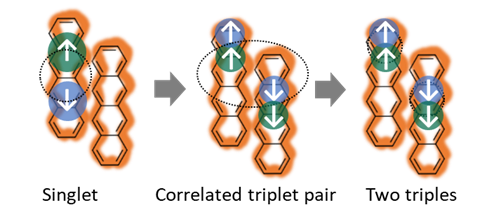
The role of inter- and intramolecular interactions in the singlet fission
Supervisor: A. Köhler, Experimental Physics, UBT
Co-supervisor: D. Jones, Chemistry, UoM; H. Oberhofer, Theoretical Physics, UBT
One approach to highly efficient solar cells consists in the use of singlet fission, where an excited spin-singlet state decays into two spin-triplet excited states. The fission process can proceed better if the molecules involved are well aligned. In this project, the PhD student will prepare films with molecular alignment and use optical spectroscopy during the film preparation process to study how a singlet state dephases into two triplet states and what the role of molecular orientation and intermolecular interaction is in this process.
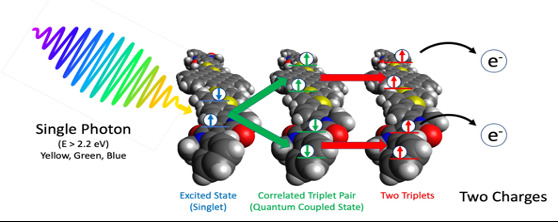
Self-assembly of discotic liquid crystalline singlet fission (SF) materials
Supervisor: D. Jones, Chemistry, UoM
Co-supervisor: A. Köhler, Experimental Physics, UBT; T. Smith, Chemistry, UoM
Incorporation of SF materials into solar cells offers the potential to reduce the cost per Watt of delivered power by up to 25-30%. In this project, we will synthesise intramolecular SF chromophores with secondary self-assembly characteristics, characterise their SF properties, and determine the impact of molecular orientation of SF yields. The role of the bridging linker between SF chromophores and the nature of the solubilising side-chains will be examined.
Singlet fission
Supervisor: T. Smith, Chemistry, UoM
Co-supervisor: A. Köhler, Experimental Physics, UBT; D. Jones, Chemistry, UoM
Singlet fission (SF) is considered one potential path to break the efficiency limit of single junction solar cells], where the excess energy from a high energy absorption is shared with a neighbouring chromophore. The detection and identification of the intermediate species involved in the singlet fission process is crucial to controlling and optimising this process. Trevor, together with Prof. Anna Köhler and David Jones, is currently seeking a student to conduct a project in Ultrafast decoherence processes detected by pump-probe spectroscopy.
Related experimental techniques can also be used to control the fate of excitons. Another project, working in conjunction with other projects on exciton logic is investigating the use of timed multiple ultrafast laser pulse sequences to control the photophysical behaviour of excitonic materials.
These projects will suit students with an interest in ultrafast laser spectroscopy.
Project Area 2: Exciton delocalization and dissociation in non-entangled conjugated bottlebrushes and polyelectrolytes.
We investigate exciton delocalization and dissociation in non-entangled conjugated bottlebrushes and polyelectrolytes. Novel non-entangled conjugated bottlebrush copolymers and mixed ion-electron conductors will be synthesized and the influence of external stimuli such as electric field, electrolyte medium and doping on structural features, exciton delocalization as well as transport will be studied using NEXAFS spectroscopy, in situ GIWAXS and optical spectroscopy.
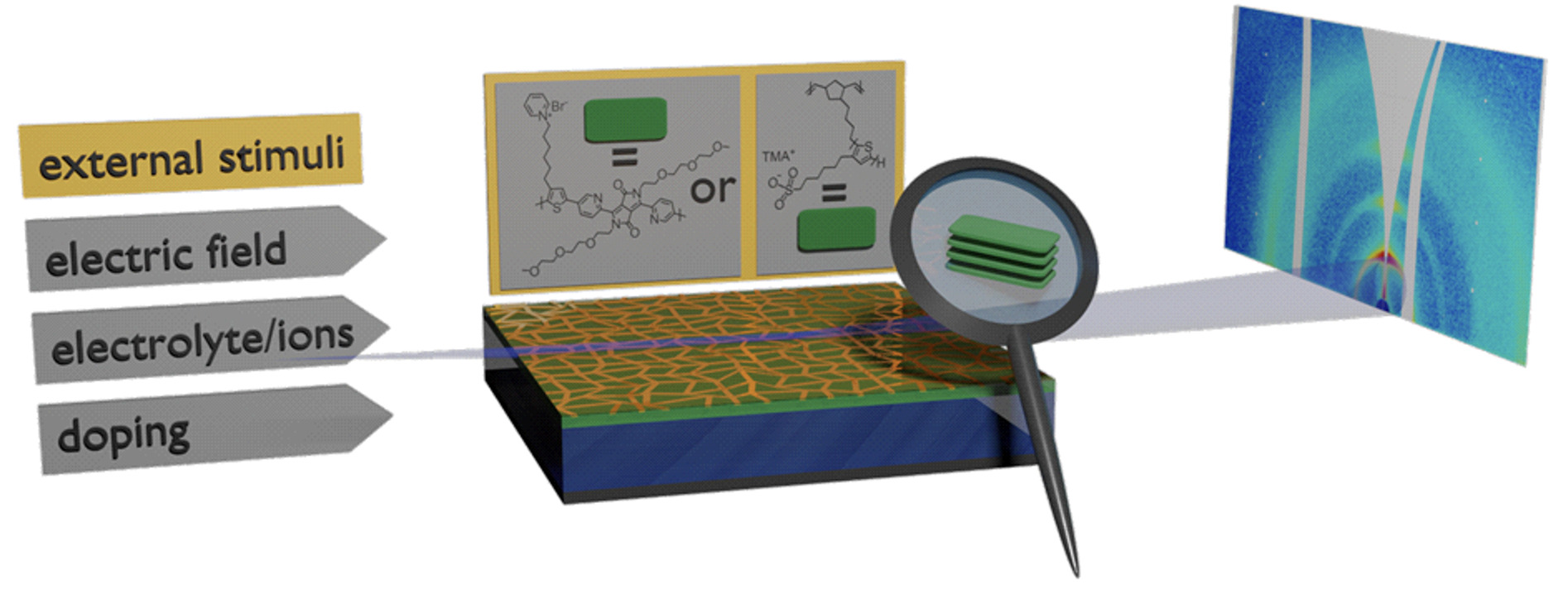
Synthesis and physico-chemical characterization of conjugated bottlebrushes and polyelectrolytes
Supervisor: M. Thelakkat, Chemistry, UBT
Co-supervisor: V. Mitchell, Chemistry, UoM; C. McNeill, Materials Science and Engineering, MON
We focus on the synthetical aspects of next generation conjugated polymers with diverse polymer topology as well as mixed ionic electronic transport properties for bioelectronics. Simultaneous volumetric ion and electron conduction in these materials enable high signal amplification in electrochemical transistors. The basic structural features as well as charge transport properties will be elucidated both in the dry as well as in the swollen state in aqueous medium to understand the device characteristics in electrochemical transistors. In a collaboration with Monash University and Australian Synchrotron detailed thin film morphology and orientation will be studied.
Project Area 3: Control exciton delocalization by shear-induced alignment.
We will control exciton delocalization by shear-induced alignment. In a bilayer heterojunction device, we control the relative orientation of the donor and acceptor molecules. Promoting chain alignment is expected to enhance exciton delocalisation. We study how interfacial chain alignment impacts solar cell performance in such devices.
Advanced synchrotron characterisation of organic semiconductor thin films.
Supervisor: C. McNeill, Materials Science and Engineering, MON
Co-supervisor: V. Mitchell, Chemistry, UoM; A. Köhler, Experimental Physics, UBT; E. M. Herzig, Experimental Physics, UBT
In this project, a range of synchrotron-based techniques will be used to study the microstructure of organic semiconductor thin films. The combination of scattering, diffraction and spectroscopy techniques will allow for the complex microstructure of such films to be disclosed. Work in Australia will focus on synchrotron measurements using the Australian synchrotron located adjacent to Monash University, while in Germany complementary optical techniques will be exploited to understand how microstructure determines photophysical processes in organic solar cells.
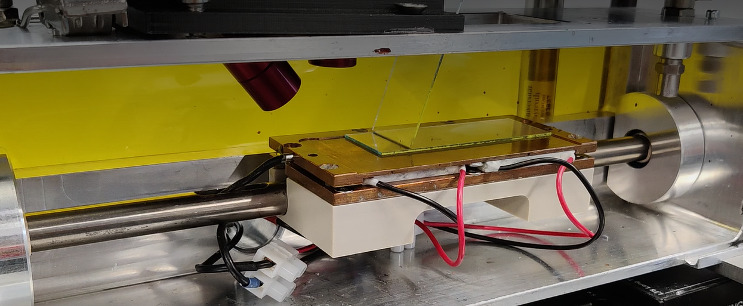
Alignment and orientation control in thin films via in-situ monitoring of thin film processing
Supervisor: E.M. Herzig, Experimental Physics, UBT
Co-supervisor: C. McNeill, Materials Science and Engineering, MON; S. Kümmel, Theoretical Physics UBT; D. Jones, Chemistry, UoM; A. Köhler, Experimental Physics, UBT
On the nanoscale it strongly matters how different molecules arrange. While the arrangement is driven by physical forces during film drying, it might at first sight look like we cannot do much about how the constituents end up arranging on the substrate.
However, understanding the basic structure formation mechanisms using time-resolved measurements allows us to interfere with the structure formation process and enables us to steer the molecules into a certain behaviour. Such artificially arranged samples will aid our collaborators to extract further fundamental knowledge on the working of organic solar cells, which will most likely form an important part of our future regenerative energy source.
Electronic excitations in molecular systems for organic solar cells
Supervisor: S. Kümmel, Theoretical Physics UBT
Co-supervisor: C. McNeill, Materials Science and Engineering, MON; E.M. Herzig, Experimental Physics, UBT; D. Jones, Chemistry, UoM; A. Köhler, Experimental Physics, UBT
We will use Density Functional Theory (DFT) and time-dependent DFT to calculate the structural properties and the electronic excitations in molecular systems in which one part serves as an electron donor and the other as an electron acceptor. Our aim is to find configurations which allow for efficient charge separation and thus can improve solar cell efficiency. Our main tools are first-principles electronic structure programs, and we rely on programs developed in our group as well as on commercially available ones.
The ideal candidate should have a master's degree in physics or theoretical chemistry with a background in electronic structure theory. Possession of an interest in the theoretical concepts that underpin DFT is welcome and encouraged.
Project Area 4: Controlling anisotropy in lead-free perovskite analogues by pressure treatments for efficient sustainable solar cells.
We aim at controlling anisotropy in lead-free perovskite analogues by pressure treatments for efficient sustainable solar cells. We will combine machine learning and in-silico screening with high throughput synthesis of lead-free perovskite analogues, to identify compounds exhibiting low anisotropy in their excited state and transport properties. These compounds are then processed via hot pressing where their optoelectronic properties are studied by in situ electrical and optical spectroscopy.
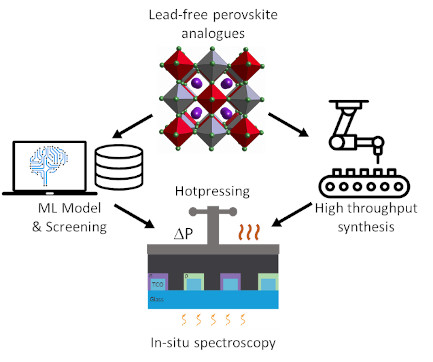
Novel lead-free Perovskites
Supervisor: H. Oberhofer, Theoretical Physics, UBT
Co-supervisor: U. Bach, Engineering, MON
Thus PhD project focuses on the modelling, screening, design and synthesis of novel lead-free Perovskites or their analogues for use in back-contacted solar cell geometries. In the Oberhofer group, the PhD student will perform first- principles calculations of charge transport properties in Perovskites and analogues. These will serve as the basis of advanced machine learning models the student will employ to efficiently sample the Perovskite/analogue design space. Such generated data will be experimentally tested by the experimental partners in Bayreuth and Melbourne.
The ideal candidate should have a master's degree in physics or theoretical chemistry with a background in density functional and charge transport theory, possibly machine learning, and preferably some programming skills.
PhD project Title: tbd
Supervisor: U. Bach, Chemistry, MON
Co-supervisor: H. Oberhofer, Theoretical Physics, UBT
project description coming soon
Project Area 5: Photoswitchable quantum dot – dye arrays for exciton logic gates.
The idea is to modulate the emission output of semiconductor QD as a function of the isomeric state of some photochromic molecules that will cover the surface of the QDs. Suppression of the emission will be achieved either by energy transfer (FRET) or electron transfer (PET). The goal is true optical logic components.
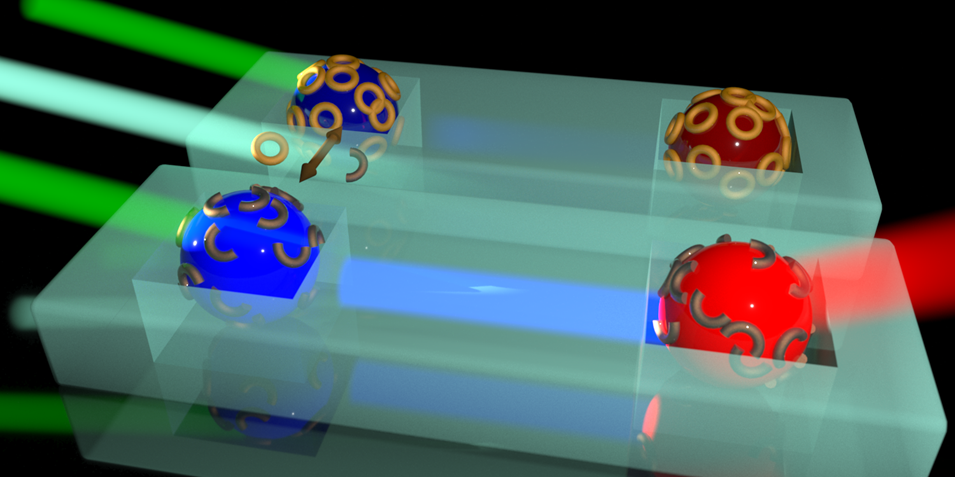
Light controls light; development of optical logic gates
Supervisor: J. Köhler, Spectroscopy of Soft Matter, UBT
Co-supervisor: P. Mulvaney, Chemistry, UoM
A logic gate generates a binary output "1" or "0" according to a combination of input stimuli and runs on electrons as signal carriers. In this project, our aim is the development of devices for signal transduction that run on photons rather than on electrons for exploiting the parallelism that is inherently possible with optical signals.
We seek a PhD student with a background in laser spectroscopy to perform optical experiments on nanostructured arrays as part of the program optical logic gates. The student will work at the Spectroscopy of soft Matter group at the University of Bayreuth (see for example Ang. Chem. Int. Ed. (2011)), and will be able to spend one year in Australia during their PhD, studying nanofabrication of the arrays with collaborator Prof. Paul Mulvaney.
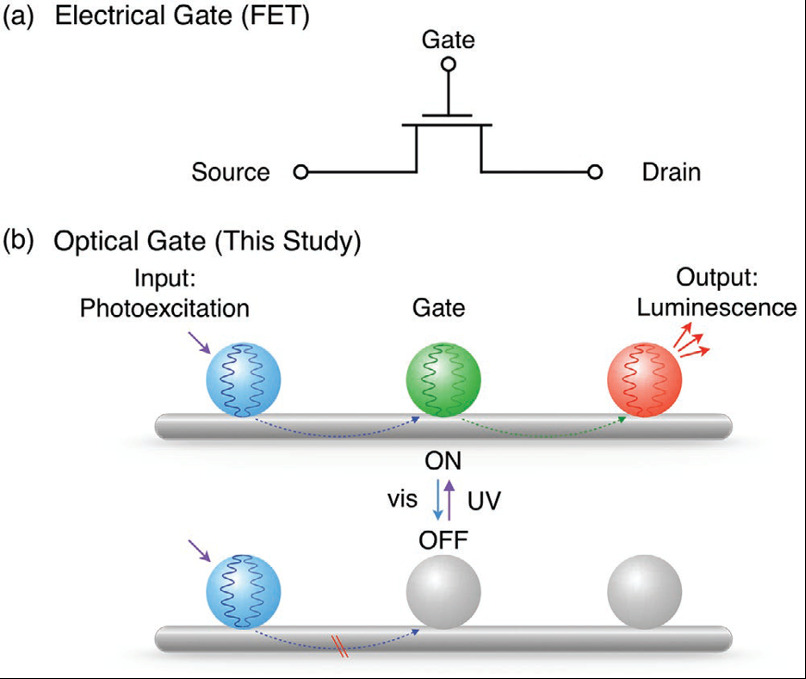
Light controls light; development of optical logic gates
Supervisor: P. Mulvaney, Chemistry, UoM
Co-Supervisor: J. Köhler, Spectroscopy of Soft Matter, UBT
Paul Mulvaney, together with Prof Jürgen Köhler (University of Bayreuth) is seeking a PhD student to lead the fabrication of nanocrystal arrays, as part of a program on exciton logic.
Optical computation is faster and more energy efficient than conventional electronic computation. Exciton logic gates form one basis for achieving optical computing.
The student will work at the Nanoscience Laboratories at University of Melbourne on the creation of arrays using electrophoretic deposition. This process is described in Adv. Optical Mater. (2022). The student will be able to spend one year in Germany during their PhD, studying the optical properties of the arrays with Prof Köhler.
The project will suit a student with a background in spectroscopy, surface chemistry or materials science.
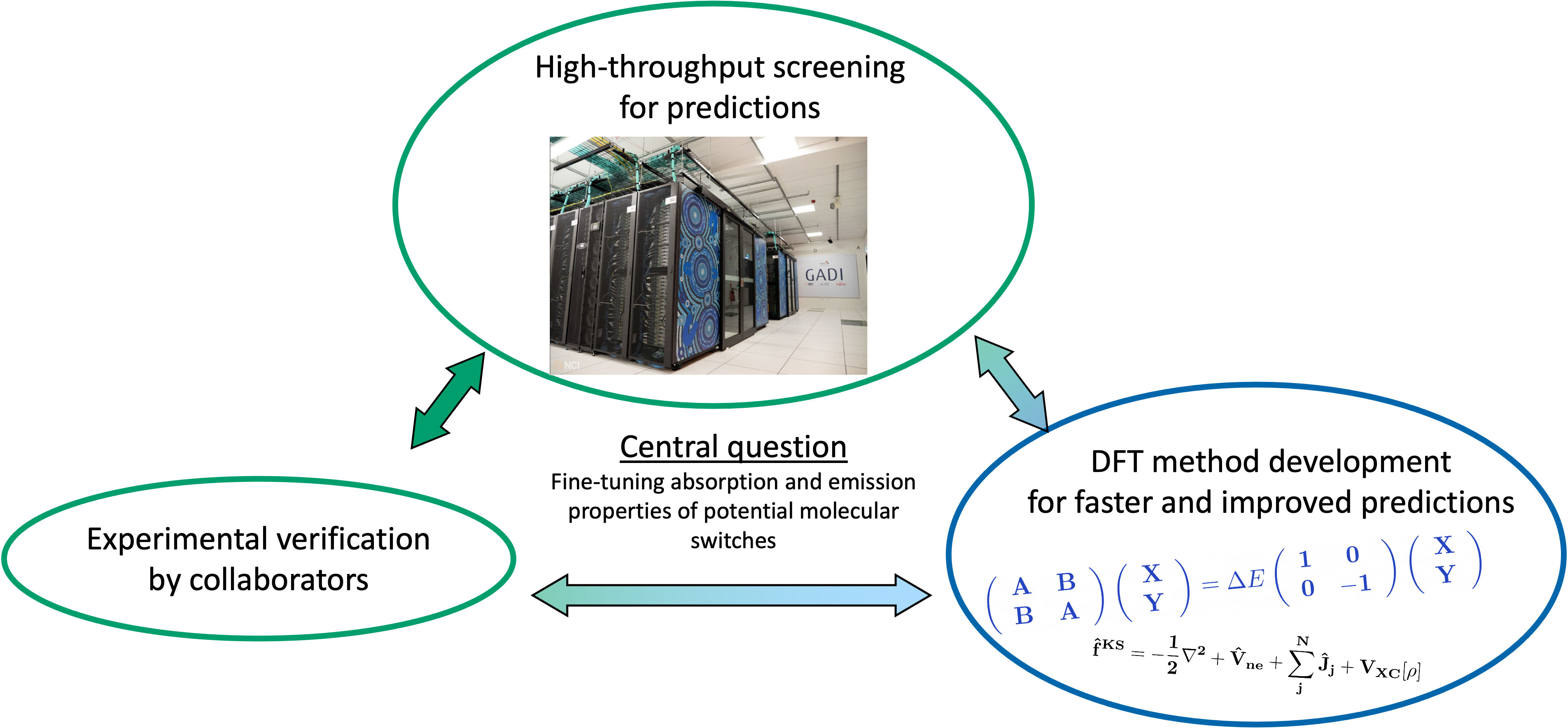
Computational modelling of photo-switchable molecules
Supervisor: L. Goerigk, Theoretical Chemistry, UoM
Co-supervisor: S. Kümmel, Theoretical Physics, UBT
Project 05 deals with the computational modelling of photo-switchable molecules with quantum-chemical methods, mostly time-dependent Density Functional Theory (TD-DFT) methods developed by the Goerigk group at The University of Melbourne. The results of the computational modelling and high-throughput screening will allow the fine-tuning of molecules to be used by our experimental partners in Melbourne and Bayreuth in conjunction with novel quantum dots. This means the PhD student will be in close touch with experimentalists to guide their developments. In addition, there might be an opportunity to look into further method development of TD-DFT methods that are more robust, applicable and computationally efficient than the existing ones, subject to the candidate's skills. The ideal candidate should have a Master’s degree in Chemistry or Physics (or a first-class Honours degree if coming from an Australian university) with some prior education and/or training in Theoretical or Computational Quantum Chemistry. While not essential, any programming and scripting skills will be viewed favourably. The candidate should also have had some first-year maths during their undergraduate studies.
Project Area 6: Nearfield-control of excited state dynamics.
We use the nearfield of plasmonic nanostructures to control the excited state dynamics of excitonic materials such as semiconductor nanoplatelets, nanocrystals and molecules. The central idea is to shape the nearfield in space and time to act as a well-controlled nano-environment. We combine nanofabrication, including controlled placement of emitters, with ultrafast external fields, optical spectroscopy and nearfield microscopy.
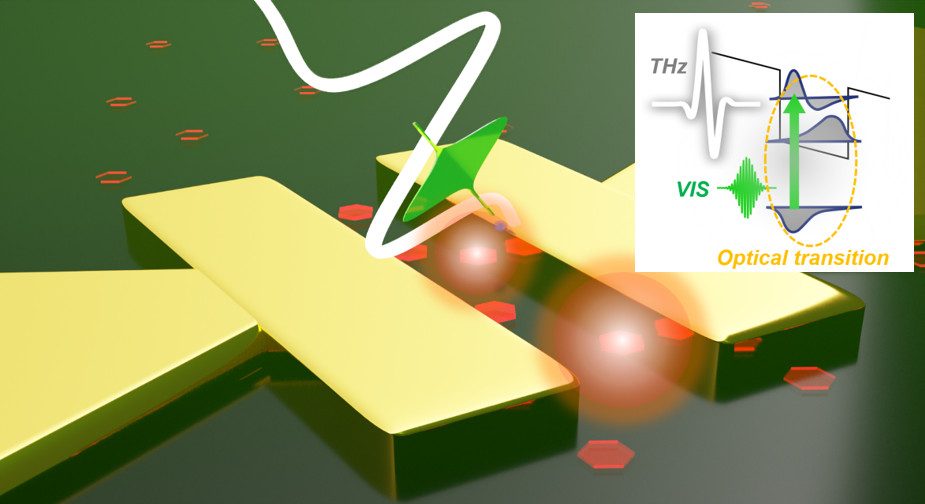
Terahertz-electric field control of exciton dynamics down to the single nanocrystal
Supervisor: G. Herink, Experimental Physics, UBT
Co-supervisor: M. Lippitz, Experimental Physics, UBT; A. Funston, Chemistry, MON; P. Mulvaney, Chemistry, UoM
Strong Terahertz fields offer novel strategies to probe and tailor exciton dynamics on ultrafast timescales. In this project, we will explore the control of exciton photophysics via THz-nearfields, enabling the fast switching of optoelectronic function inside nanostructures and applications for nanoscale sensing. The project builds on ultrafast spectroscopy infrastructure in Bayreuth and includes nanostructure assembly and characterization in Melbourne.
The ideal candidate should have experience in ultrafast optics and laser spectroscopy and be highly motivated to advance his/her knowledge in an interdisciplinary environment.
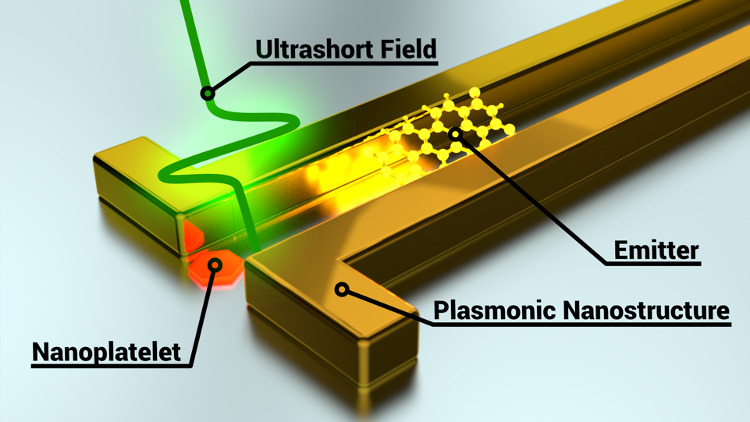
Ultrafast spectroscopy of coupled quantum emitters
Supervisor: M. Lippitz, Experimental Physics, UBT
Co-supervisor: G. Herink, Experimental Physics, UBT; A. Funston, Chemistry, MON; P. Mulvaney, Chemistry, UoM
An especially intriguing effect of nanostructure-modified emission and absorption processes is the channelling of one photon emitted by one quantum emitter to a second remote emitter and let it absorb there. When the absorption probability approaches one, the second quantum emitter acts as an optical transistor. Ultimately, when the photon exchange rate is large enough, both emitters would couple coherently and form a state similar to a molecular J-aggregate. We plan to position two nanocrystals near a plasmonic waveguide (in Melbourne) and study their incoherent and coherent interaction by ultrafast spectroscopy of single emitters (in Bayreuth) and by nearfield microscopy (in Melbourne)
The ideal candidate should have a background in optics and spectroscopy to set up and run spectroscopic experiments.
Nearfield imaging of hybrid plasmonic nanostructures
Supervisor: A. Funston, Chemistry, MON
Co-supervisor: G. Herink, Experimental Physics, UBT; M. Lippitz, Experimental Physics, UBT; P. Mulvaney, Chemistry, UoM
A challenge in the translation of nanoscale objects to larger, functional structures is the precise placement of the nanoscale objects in an ideal geometry with respect to one another. This project will extend nanoparticle self-assembly techniques to achieve the specific placement of asymmetric nanoparticles in a well-defined geometry with respect to one another. This ability is key to manipulating the optical response of nanostructures in a predictable and useful way. The photoluminescence and near-field of the resultant structures will be interrogated using single particle/assembly optical microscopy and scanning near-field optical microscopy.
Project Area 7: Unravelling Light-Matter Interactions in Nano- and micro-patterned perovskite films and devices.
The idea is to control the optical properties of functional gain materials such as perovskites by hierarchical structuring of dielectric and semiconducting materials. We will introduce grating structures with hierarchical length scales to spatially shape field distributions and to control the emissivity, absorptivity, and lifetime of optical devices. The light-structure interaction will be investigated by near-field optical microscopy and time-resolved spectroscopy.
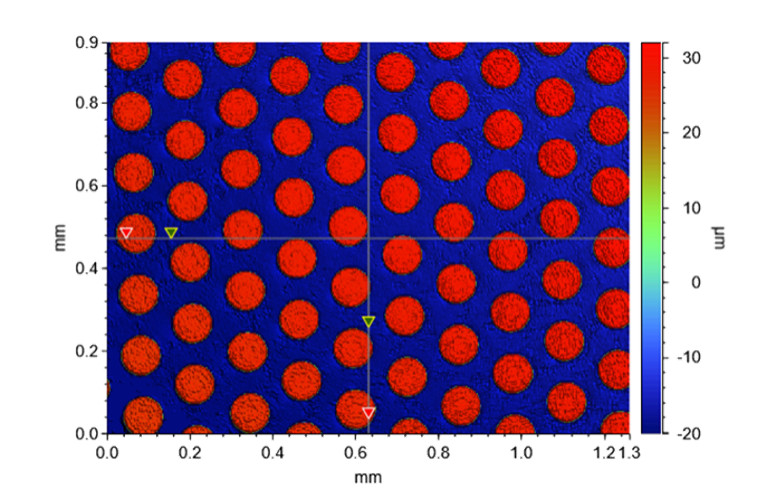
Investigation of Nano- to Micro-scale Patterning Effects on Perovskite Thin Films and Devices
Supervisor: J. Jasieniak, Chemistry, MON
Co-supervisor: M. Retsch, Chemistry, UBT, A. Funston, Chemistry, MON
Metal halide perovskites have emerged as a promising photovoltaic materials due to their high efficiency, spectral tunability and low cost processability. These properties make such materials particularly interesting also for solar window applications, although achieving high efficiency with controlled color and optimised transparency and reflectivity remain as major challenges.
This project will investigate the nature of light absorption, transmission and reflection in stand-alone perovskite films and solar cells with nano- and micro-patterned features. By controlling the patterned perovskite length-scale and its degree of ordering through advanced printing and patterning methologies, it is anticipated that color-tunable and high-efficiency perovskite thin films and solar technologies will be conceived.
The ideal candidate is somebody who likes to work in a team, is curious, and has an undergraduate background in materials, chemistry, physics, process engineering, or a related field.
Unravelling Interactions between Nano- and Micro- Scale Patterned Structures and Perovskite Gain Materials in the Near-field at High Spatial Resolution
Supervisor: A. Funston, Chemistry, MON
Co-supervisor: J. Jasieniak, Chemistry, MON; M. Retsch, Chemistry, UBT
This project will answer the questions: "How do 2D patterns control the emission and propagation of emission in the near-field and far-field?", and "What is the influence of the patterned array compared to the morphology and/or patterning of the perovskite?" Thin films with both dielectric patterning and structure in the perovskite layer will be fabricated and their optical properties understood. Optical characterisation will include both time- and spatially- resolved spectroscopy (scanning near-field optical microscopy (SNOM), time-resolved confocal microscopy, and single particle spectroscopy) to understand the near-field emission of perovskite/structured dielectric both separately and combined, the lifetime of near-field emission and propagation of energy.
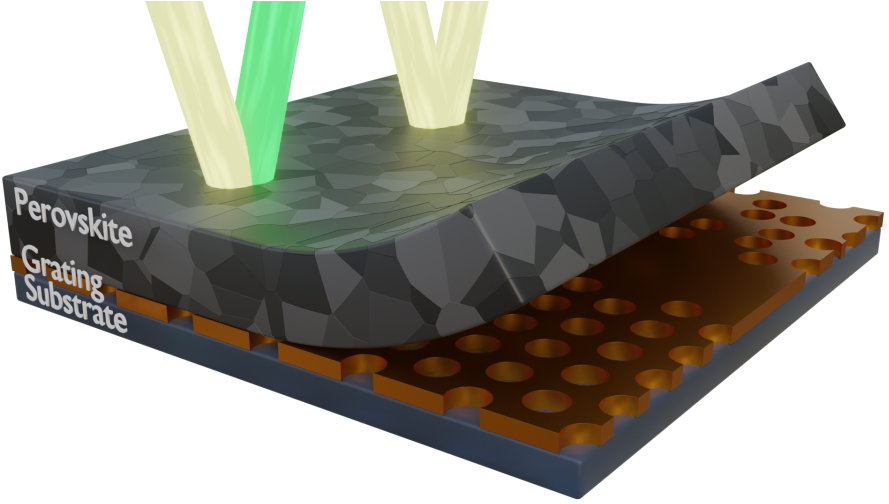
Investigating Order to Disorder in Nano- to Micro- Scale Patterned Dielectric Arrays
Supervisor: M. Retsch, Chemistry, UBT
Co-supervisor: J. Jasieniak, Chemistry, MON; A. Funston, Chemistry, MON
The project will focus on dedicated two-dimensional structures comprising length scales from a few hundred nanometres accessible through nanosphere lithography up to several tens of micrometres accessible through direct write lithography. A core question is the role of disorder on the optical excitation, being far less understood compared to highly periodic structures. We aim to control and quantify the degree of order/disorder through colloidal self-assembly techniques.
A key material focus for this work will be to understand the impacts of the degree of periodicity in such dielectric structures on metal halide perovskites as a light-absorbing material. Perovskites possess an ABX3 structure, where A is a monovalent cation (i.e. methylammonium), B is a divalent cation (typically lead) and X are halides (Cl, Br and I). By tuning the halide composition, the optical band-edge can be shifted across the entire visible spectrum, thus permitting the study of cavity modes with the optical resonances within the perovskites. These hierarchical structures will be investigated with UV/Vis/NIR and MIR spectroscopy. In cooperation with our partners, we will evaluate how such mesostructures may be included in future photovoltaic devices and how it governs the local field distributions.

